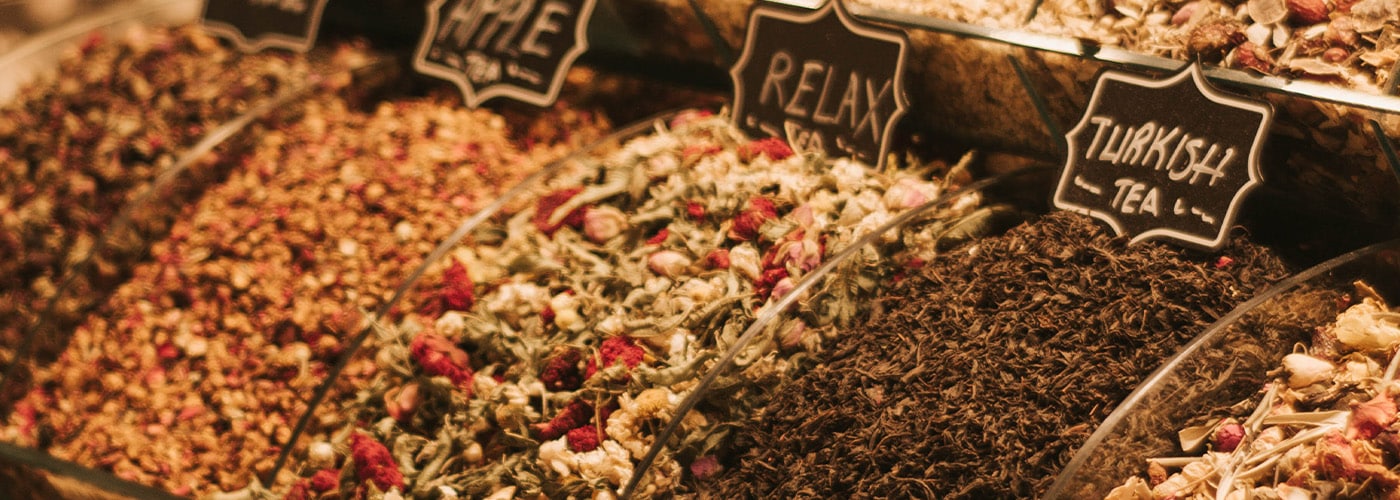Tea bags, powdered or loose – does it matter?
Tea has been a cherished beverage for centuries, enjoyed for its exotic and diverse flavours, as well as its spiritual and health benefits. However, it’s important to understand that the way we choose to prepare and consume tea can have significant impact on our health.
In this article, we’ll delve into the upsides and downsides of three popular methods: teabags, fresh tea leaves, and powdered tea.
Teabags:
Teabags have long been the convenient go-to for tea lovers worldwide. Almost all grocery store tea brands are in conventional tea bags, and many brands don’t describe in much detail what they’re made of.
Plastic teabags increase the chances of ingesting microplastics or other unwanted nanoparticles, as small plastic chips are more likely to break-off into the hot tea while brewing. Microplastics and nanoparticles have been linked to chronic inflammation, increased risk of cancer, obesity, infertility, asthma, and lung disease.
Paper teabags, unfortunately are potentially unsafe. Paper teabags are often treated with a chemical called epichlorohydrine, a compound found in pesticides that becomes active when in contact with hot water. Epichlorohydrine has been shown to cause lung cancer in humans and cause nasal cavity and skin cancer in animals, as well as decreased fertility in males.
Mesh teabags tend to be made with a variety of plastics including PVC, thermoplastic, viscose rayon, and most commonly, food grade nylon or polyethylene terephthalate (PET). PET is a known endocrine disruptor and potential carcinogen.

Commercial teabags usually contain lower-grade tea leaves, called “tea dust,” affecting the overall flavour, herbal composition, and aroma. A common example is nettle (Urtica dioica). Commercial nettle tea is often thin, light amber in colour with a very mild taste. Authentic, loose-leaf nettle is dark green and slightly thicker than most teas, with a mild to strong taste depending on how concentrated it is. To compensate for the loss in quality, commercial tea companies often add artificial flavourings, perfumes and sweeteners to tea bags to approximate the natural scents from authentic loose tea.
Additionally, along with the worrisome health and quality concerns from teabag use, many teabags are made from non-biodegradable materials, contributing to ecological toxicity, especially that of environmental microplastics.

Powdered Tea:
Powdered tea, such as matcha or spearmint, have gained popularity due to the intensity of flavour. These teas are made using low pressure to extract liquid from fresh tea leaves, and then the liquid is freeze dried to form a powder.
Though this process retains the taste of the tea, there are studies that show that it may reduce some antioxidant activity. And for tonic herbs (nourishing herbs to the body) this diminishes some of the overall benefits.
Additionally, many commercial powdered teas contain artificial sweeteners and preservatives, as well as high amounts of fluoride. Fluoride causes many health issues, including arthritis, bone damage, fatigue, heart, kidney, and liver issues.
Organic, whole leaf powdered teas have higher nutrient levels, and have been proven to retain many of their antioxidant, anti-inflammatory and overall health benefits, but can be more expensive than traditional loose leaf tea options.

Fresh Tea Leaves:
Fresh tea leaves provide an authentic tea experience at a fraction of the cost. Using fresh tea leaves allows for higher quality tea, resulting in superior flavour, nutrient composition, and aroma. The number of leaves and brewing time can be adjusted according to personal preferences, herbal synergy, and potency, allowing for a customised and luxurious tea experience.
But be wary of brands with additional additives, such as artificial sweeteners or preservatives (like sulphites). Unflavoured, organic loose tea is the best form for health.
Dried, loose tea does have a long shelf-life, lasting up to 12 months if stored safely – away from air, heat, light, or moisture. The best way to store loose tea is in an airtight container in a cool, dark place.
Also, loose tea is often packaged in eco-friendly materials, reducing the environmental impact of commercial teas. Buying fresh tea also supports local herbalists and growers, sustaining the local economy.
Conclusion:
Though teabags and powdered teas offer convenience, you should be aware that you are often drinking more than you bargained for!
Fresh loose tea leaves provide a high-quality, health promoting and customisable experience, allowing you to savour each sip without worrying about microplastics, pesticides, preservatives, or additives.
To learn more about herbal combinations and how to prepare teas, consider studying a Naturopathic Diploma in Herbal Medicine at CNM!
Written by Charlee Martin

